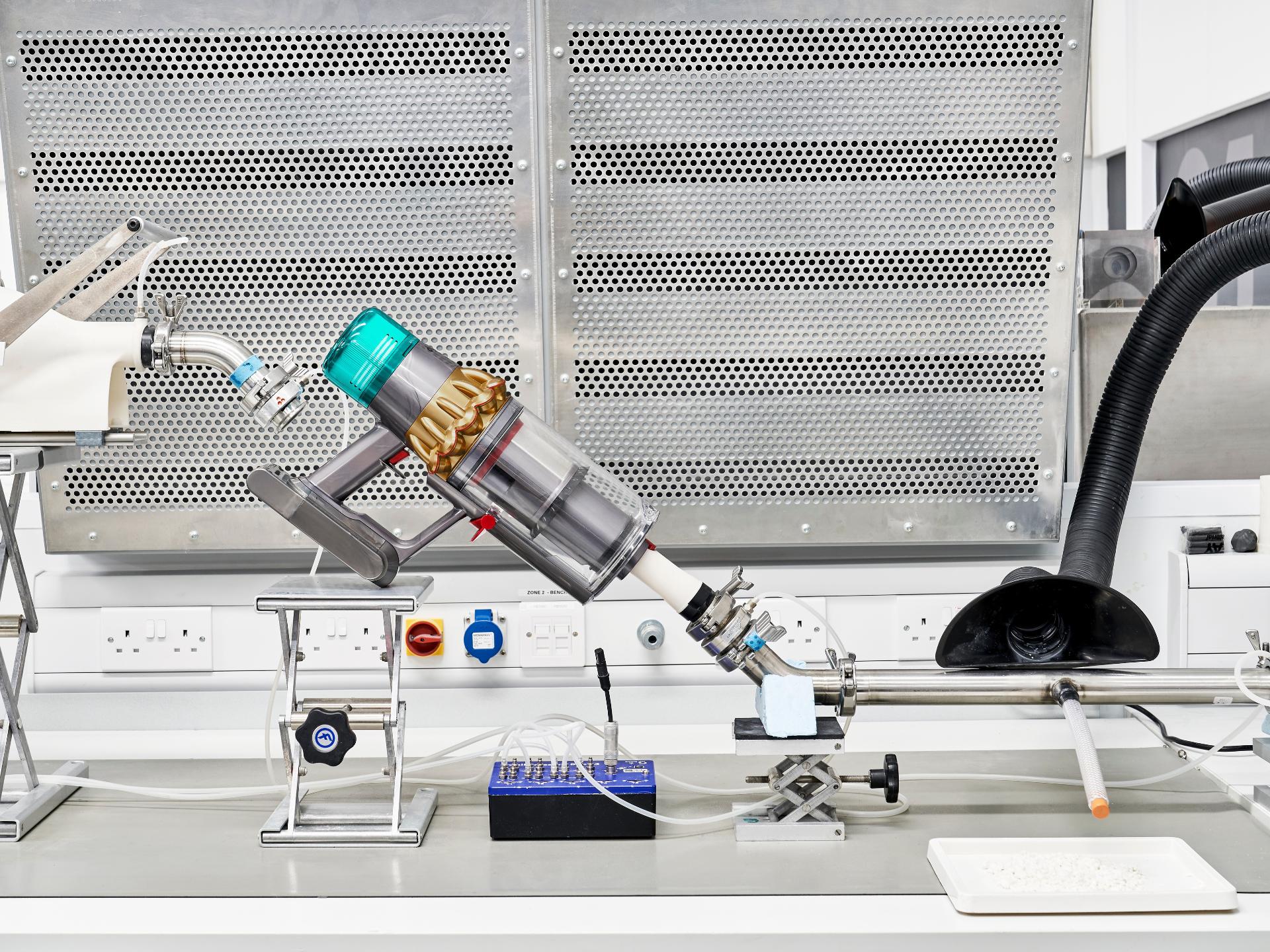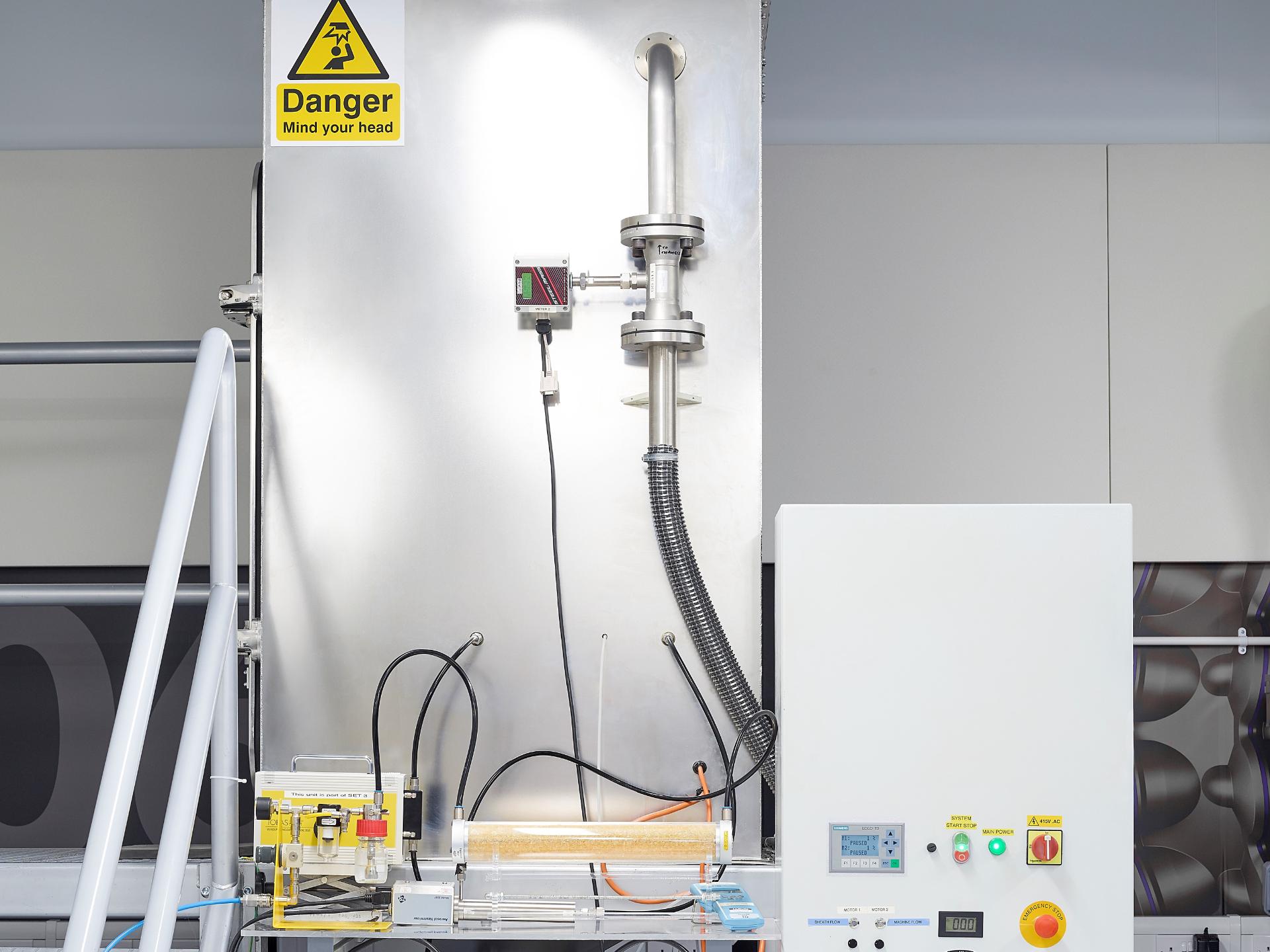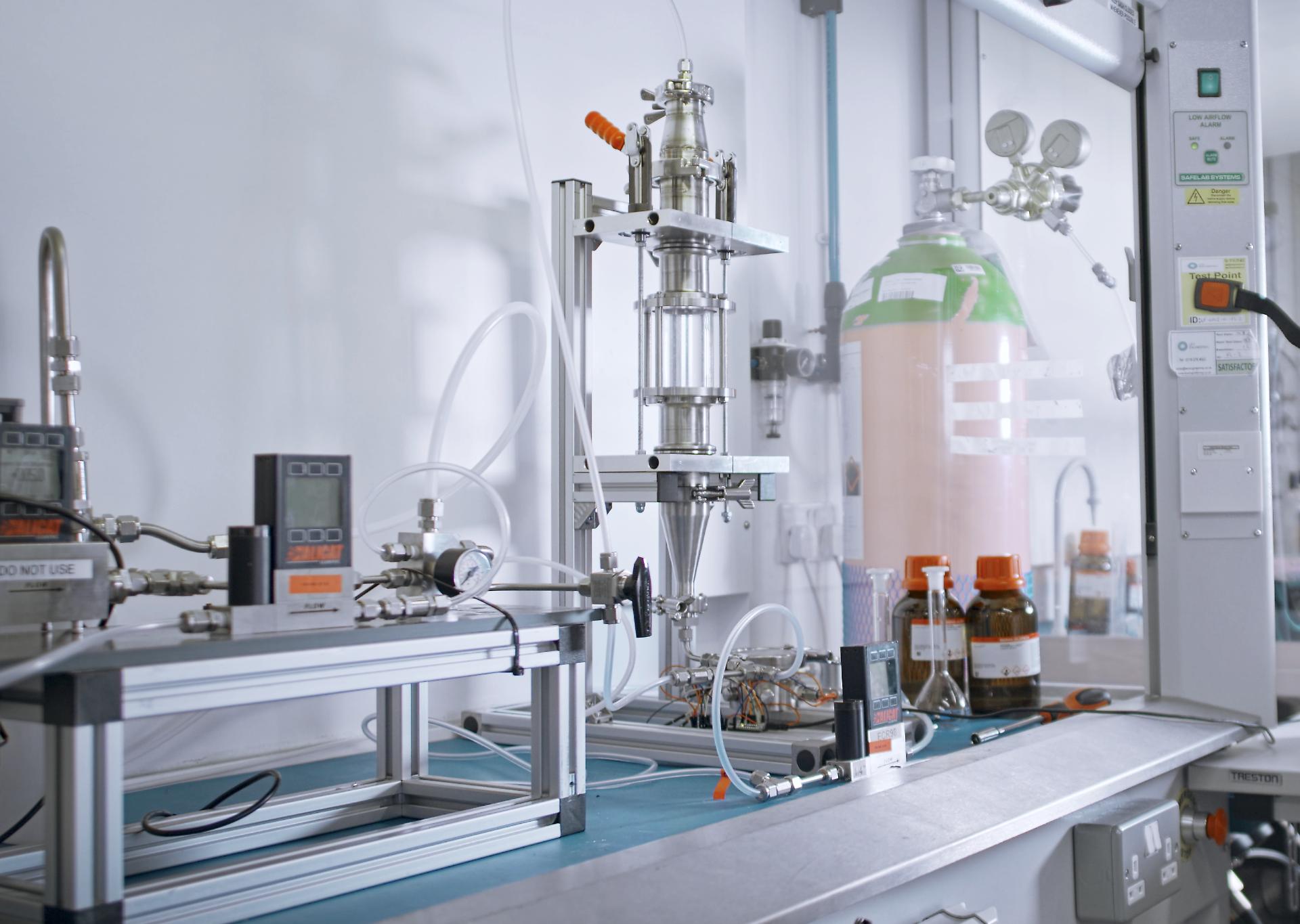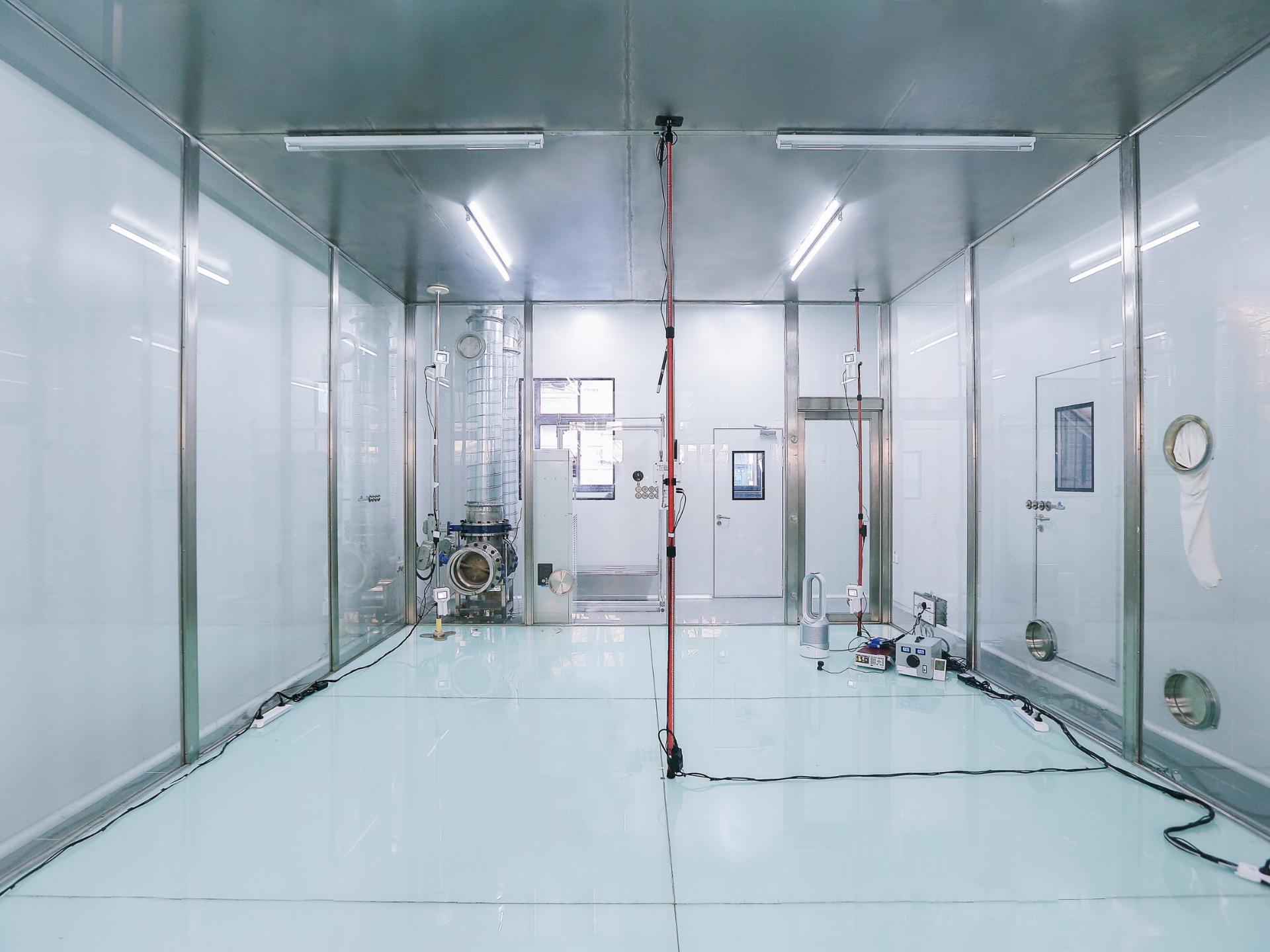Separation Systems Labs

For nearly 30 years, we’ve been fine-tuning our expertise in filtration and the department has supported the growth of our floorcare and environmental care technology. Our engineers spend a lot of time developing our filters and seals to make sure that we capture not only the dust you can see, but also the dust you can’t. We also want to make sure that the air being expelled from the vacuum is clean – keeping your home clean and hygienic.
-

NLOS Test Rig
A good vacuum should have no loss of suction (NLOS) across its battery run-time.
The NLOS test rig allows us to load dust into our vacuums and monitor suction levels and when it drops. The more dust that can be loaded before losing suction, the better its filtration systems and Dyson’s vacuums do not loss power until the bin is full demarcated by the ‘max’ line on our vacuums.
-

ASTM Test Chamber
ASTM F1977 is an industry-standard test that measures filtration capabilities at both a component and whole-machine level.
A machine that uses a HEPA filter is different from a HEPA machine. Beyond using a HEPA filter, machines need to be fully sealed for it to be a HEPA machine. We run tests on individual filters as well as the full machine across both our purifiers and vacuums, to ensure that all machines are fully sealed, and have advanced filtration systems.
-

Priestley Lab
The Priestley Lab is equipped with 10 highly sensitive gas detectors capable of identifying 19 hazardous gases, such as formaldehyde, ozone, and benzene. This allows us to perform precise and comprehensive testing on our filters’ efficiency such as the SCO (Selective Catalytic Oxidation) filter which destroys formaldehyde, ensuring the safety and quality of our machines.
-

POLAR Chamber
CADR (clean air delivery rate) is the international standard for testing purifiers, measuring the filtration efficiency of the filter. It takes place in a chamber measuring 12m2, with the purifier in the middle of the room.
However, at Dyson, we believe that there is a better way to test and developed the POLAR (point loading and auto response) test method that uses nine sensors to assess the machine’s purification effectiveness, requiring it to identify pollution events, activate purification automatically and switch off when the space is clean. This test takes place in a room measuring 27m2 – far larger than the CADR chamber and with the purifier sitting in the corner, a more accurate representation of purifiers’ locations in real homes.